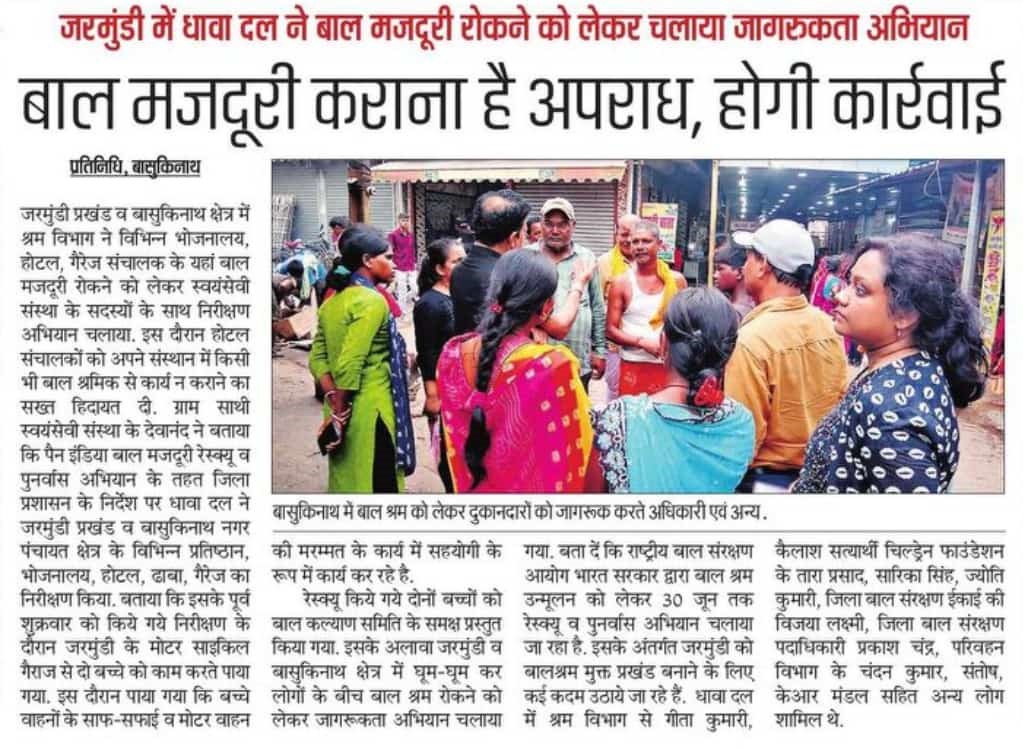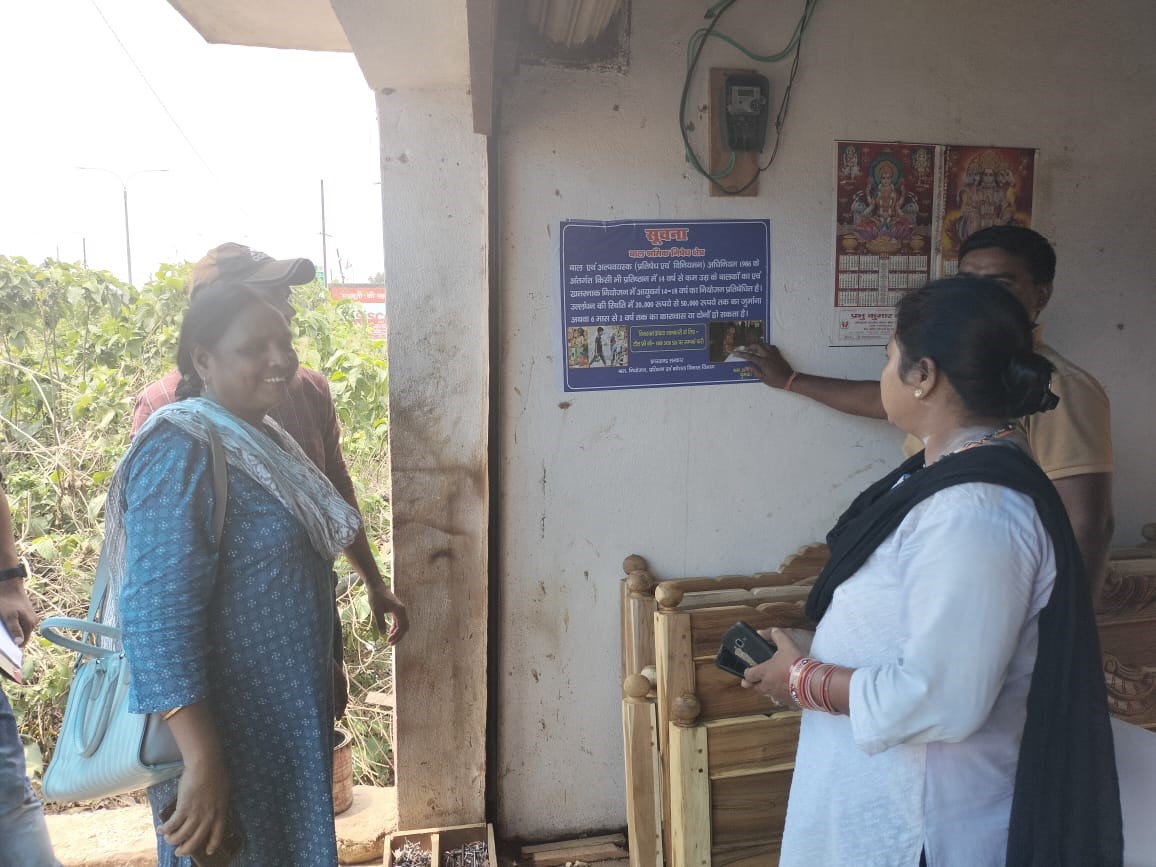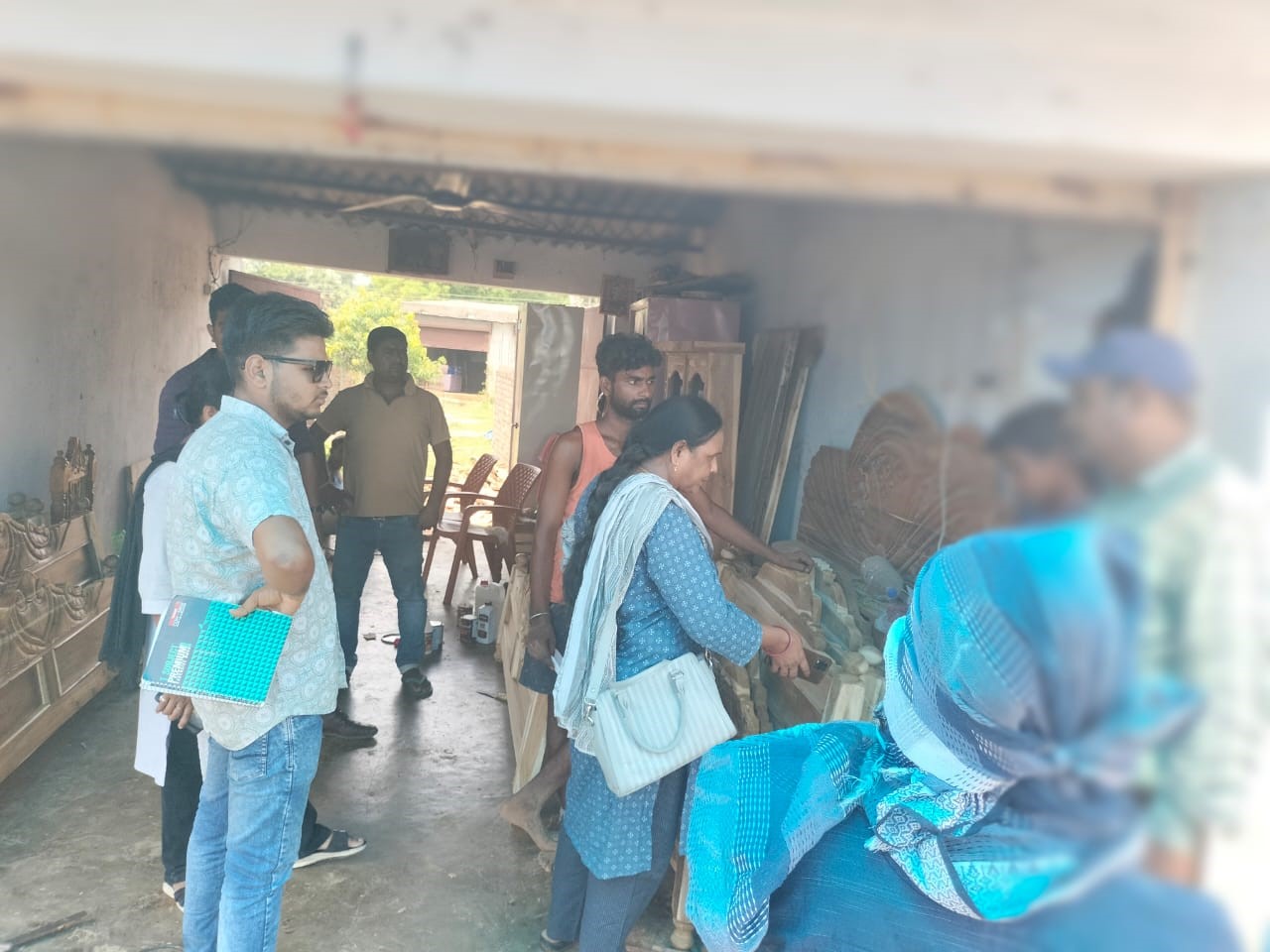Introduction
Child labor remains one of the most pressing issues in India, particularly in rural areas where poverty, lack of education, and socioeconomic instability force many children into the workforce.
This detailed case study examines the rescue and rehabilitation of a 14-year-old boy from Mahua village, Nonihat, Dumka, Jharkhand, who was forced into child labor following the death of his father. The operation, conducted in June 2024, highlights the challenges and successes of combating child labor through coordinated efforts by various stakeholders, including the Gram Sathi organization, local authorities, and government bodies.
Background
The boy, who will be referred to as "Rahul" (a pseudonym to protect his identity), was born and raised in Mahua village, Nonihat, under the Hasdhiya police station's jurisdiction in Dumka, Jharkhand. His family faced severe financial difficulties after the sudden death of his father, Suraj Mistri, who had been the sole breadwinner. Rahul's mother, Chandamuni Devi, was left to care for Rahul and his 11-year-old sister, but her limited income was insufficient to support the household.
Given these circumstances, Rahul was compelled to drop out of school and start working at Sharma Furniture, a local carpenter shop, to contribute to the family's income. He worked long hours from 9 AM to 5 PM, earning just INR 150 per day. Despite his young age, the burden of supporting his family fell on his shoulders, a responsibility that weighed heavily on him.
Identification and Initial Response
In early June 2024, Basanti Murmu, a Community Social Worker (CSW) with Gram Sathi, visited Mahua village as part of her routine community outreach activities. During her visit, she noticed Rahul working at the carpenter shop and immediately recognized the signs of child labor. Her extensive experience in the field had equipped her with the skills to identify such cases, and she was quick to realize that Rahul's situation required urgent intervention.
Understanding the gravity of the situation, Basanti took immediate action. She informed the local authorities, including the labor department and the Hasdhiya Police Station, about Rahul's condition. She also contacted her colleagues at Gram Sathi, including the Program Manager, Project Coordinator, and Counselor, to plan a coordinated response.
Stakeholders Involved
The success of any child labor rescue operation relies heavily on the collaboration and coordination of multiple stakeholders. In Rahul's case, the following key stakeholders were involved:
Gram Sathi:
- Community Social Worker (CSW): Basanti Murmu, who identified Rahul's case and initiated the rescue operation.
- Program Manager: Oversaw the coordination of the rescue operation and provided strategic guidance.
- Project Coordinator: Assisted in planning the rescue and ensuring the involvement of all necessary stakeholders.
- Counselor: Provided on-site and post-rescue counseling to Rahul and his family.
Government Authorities:
- Labor Department: Played a crucial role in legally addressing the issue of child labor and ensuring Rahul's safety.
- Police Department (Hasdhiya Police Station): Provided security and legal enforcement during the rescue operation. The team included the Police In-Charge, two female police officers, and three guards.
- Child Welfare Committee (CWC) Representatives: Ensured that Rahul's case was handled according to the legal procedures for child protection and oversaw his rehabilitation process.
Planning and Execution of the Rescue Operation
After identifying the case, Gram Sathi, under the leadership of Basanti Murmu, organized a meeting with the stakeholders to plan the rescue operation. The meeting was held in mid-June 2024 and included representatives from Gram Sathi, the labor department, the Hasdhiya Police Station, and the CWC. During this meeting, the stakeholders discussed the best course of action to ensure Rahul's safe rescue and subsequent rehabilitation.
Key Objectives of the Rescue Operation:
- Immediate Rescue: Safely remove Rahul from the hazardous working conditions at Sharma Furniture.
- Counseling and Support: Provide immediate psychological and emotional support to Rahul and his family.
- Legal Action: Ensure that the case is handled in accordance with child protection laws, and hold those responsible for employing a minor accountable.
- Rehabilitation: Facilitate Rahul's reintegration into the education system and secure financial assistance for his family.
- Community Awareness: Raise awareness about the dangers of child labor and the importance of education in the local community.
Execution of the Rescue Operation
On the day of the rescue operation, a well-coordinated team of stakeholders arrived at Sharma Furniture. The team was led by the Police In-Charge from Hasdhiya Police Station and included two female police officers, three guards, representatives from the labor department, and members of Gram Sathi, including Basanti Murmu, the Program Manager, Project Coordinator, and Counselor.
As the team approached the shop, they found Rahul working under strenuous conditions. He appeared exhausted and distressed, a clear indication of the physical and emotional toll that the work had taken on him. The police ensured that the area was secure, while Basanti and the Counselor approached Rahul to provide immediate counseling. They reassured him that he was not in trouble and that they were there to help him and his family.
Counseling and Legal Intervention
Following the rescue, Rahul and his mother were taken to the CWC, where they received further counseling. The CWC representatives played a critical role in this phase, ensuring that Rahul and his mother understood their rights and the legal protections available to them. The CWC also made arrangements for Rahul to be placed in a safe environment while his case was being processed.
During the counseling sessions, Rahul opened up about the difficulties his family had faced since his father's death. He explained that he felt obligated to work to support his mother and sister, who were struggling to make ends meet. His mother, who was present during the counseling, expressed her deep concern for her children's future but admitted that she had no other choice but to allow Rahul to work due to their dire financial situation.
The CWC representatives, along with Basanti and the Counselor, provided both Rahul and his mother with information about the legal implications of child labor and the available government schemes that could assist them. They were informed about the Sponsorship Scheme, which provides financial assistance to families in distress, and the Kasturba Gandhi Balika Vidyalaya (KGBV) program, which offers educational opportunities for girls from disadvantaged backgrounds.
Documentation and Application for Government Support
With the immediate crisis addressed, the focus shifted to securing long-term support for Rahul and his family. Basanti Murmu took charge of the documentation process, which involved gathering all the necessary paperwork to apply for government schemes that would provide financial assistance and educational opportunities for the family.
Key Government Schemes Applied For:
- Sponsorship Scheme: This scheme was crucial in providing financial support to Rahul's family. The application process involved submitting documents that proved the family's financial distress and their need for assistance.
- Kasturba Gandhi Balika Vidyalaya (KGBV): An application was submitted to enroll Rahul's younger sister in KGBV, ensuring that she could continue her education in a safe and supportive environment.
Basanti worked tirelessly, liaising with various government offices to ensure that the applications were processed efficiently. She also made multiple visits to Rahul's family to assist them with the necessary documentation, a task that was particularly challenging given the family's lack of awareness and experience with such bureaucratic processes.
Outcome and Impact
The intervention led to several positive outcomes, significantly improving the lives of Rahul and his family:
-
Rescue from Child Labor:
Rahul was successfully removed from the hazardous and exploitative working conditions at Sharma Furniture. This rescue not only ensured his safety but also prevented the long-term physical and psychological damage that prolonged child labor could have caused.
-
Educational Reintegration:
One of the most significant achievements of this intervention was Rahul's re-enrollment in school. The importance of education in breaking the cycle of poverty cannot be overstated, and this step was critical in securing Rahul's future. Additionally, his younger sister was in the process of being enrolled in Kasturba Gandhi Balika Vidyalaya (KGBV), which would provide her with a safe and supportive educational environment.
-
Financial and Social Support:
The Sponsorship Scheme and the Savitribai Phule Yojana provided the family with much-needed financial assistance. This support alleviated the pressure on Rahul to work and allowed the family to focus on rebuilding their lives. The financial aid also enabled Rahul's mother to make better decisions for her children's future, including prioritizing their education.
-
Legal and Community Awareness:
This case served as a powerful example of the importance of legal compliance and community awareness regarding child labor. The involvement of local panchayat leaders and villagers in the rescue operation highlighted the collective responsibility of the community to protect its children. Moreover, the case raised awareness among local employers about the legal consequences of employing minors, thereby contributing to the broader fight against child labor in the region.
-
Continuous Monitoring and Support:
Gram Sathi, led by Basanti Murmu, continued to monitor Rahul's situation closely. Regular follow-up visits ensured that the family remained on track with the rehabilitation process. Basanti also provided ongoing counseling and support, helping the family navigate any challenges they encountered along the way.
Challenges and Lessons Learned
While the intervention was successful, it was not without its challenges. Several key lessons were learned during the process:
-
Navigating Bureaucratic Hurdles:
The application process for government schemes proved to be a significant challenge. The lack of awareness and understanding of bureaucratic procedures among rural families often delays the provision of much-needed assistance. This case highlighted the importance of having a dedicated social worker, like Basanti Murmu, who could guide the family through the process.
-
Ensuring Community Involvement:
While the community played a supportive role in this case, there were initial hesitations. Overcoming these hesitations required continuous engagement and education about the importance of child protection and the long-term benefits of preventing child labor.
-
Sustaining Long-Term Impact:
Ensuring that the intervention had a lasting impact required continuous monitoring and support. The success of this case emphasized the need for sustained efforts, including follow-up visits and ongoing counseling, to ensure that the family remained on the path to rehabilitation.
-
Addressing the Root Causes of Child Labor:
This case underscored the importance of addressing the root causes of child labor, such as poverty and lack of education. While rescue operations are essential, they must be complemented by initiatives that tackle these underlying issues to prevent children from being forced into labor in the first place.
Conclusion
The successful rescue and rehabilitation of Rahul from child labor in Mahua village, Nonihat, Dumka, Jharkhand, is a testament to the power of coordinated efforts and the dedication of social workers like Basanti Murmu. This case study highlights the critical role of community involvement, government support, and legal enforcement in combating child labor.
While challenges remain, the positive outcomes achieved in this case provide a blueprint for future interventions. By addressing both the immediate and long-term needs of children at risk, it is possible to break the cycle of poverty and exploitation, ensuring that every child has the opportunity to live a safe, healthy, and fulfilling life.
As we continue to fight against child labor, it is essential to remember that each rescued child represents not just a life saved, but also a step toward a more just and equitable society. The story of Rahul and his family serves as a reminder of the importance of this work and the profound impact it can have on the lives of those most vulnerable.




